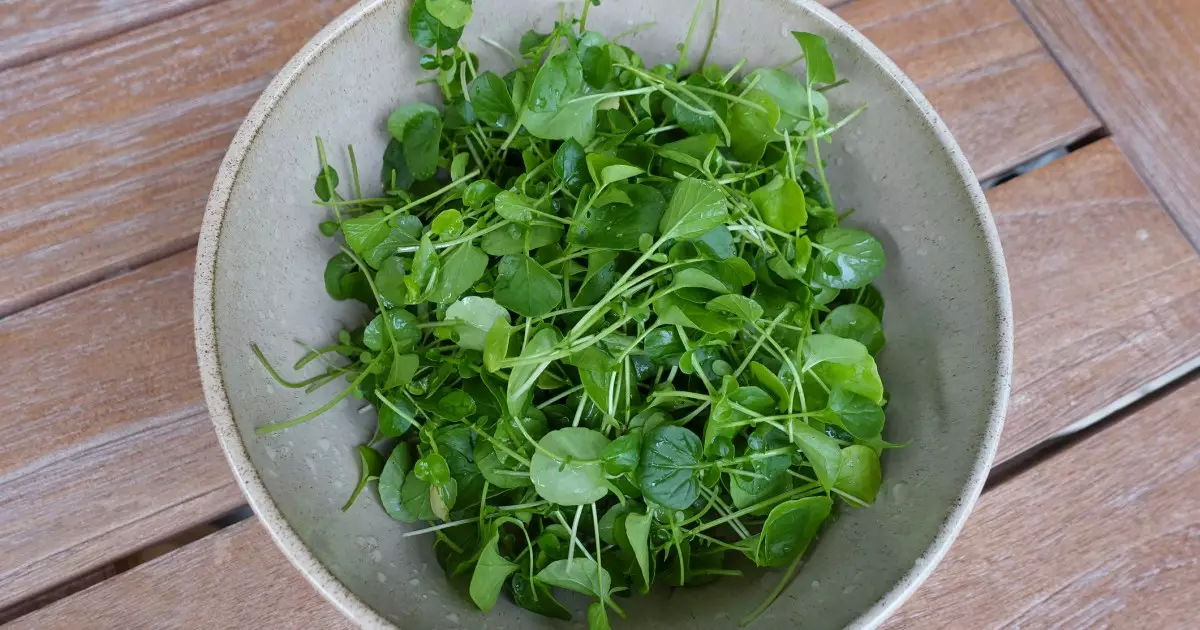Watercress, scientifically known as Nasturtium officinale, is a leafy green vegetable that’s often celebrated for its nutritional properties in human diets. Found in fresh salads and used as a garnish, it packs a punch with vitamins and minerals. However, for dog owners, the presence of this plant raises significant questions—especially regarding our furry friends’ health. The understated truth is that while watercress isn’t classified as highly toxic, its consumption can lead to severe gastrointestinal discomfort in dogs. You might wonder if a small bite might do any harm, but as it turns out, the risks outweigh the benefits.
Dogs have unique digestive systems that differ enormously from ours, making it crucial to scrutinize what they consume closely. Many pet parents may be alarmed to discover that even a modest amount of watercress can trigger digestion problems, potentially leading to vomiting and diarrhea. Instead of soothing your pet’s hunger, this leafy plant becomes a significant source of distress, leaving both the animal and owner in a sticky situation.
Psycho-Social Considerations: Knowledge is Power
Thus, it becomes imperative to understand watercress’s relatively mild toxicity classification according to the American Society for the Prevention of Cruelty to Animals (ASPCA). What this means is that while watercress may not contain acute toxic compounds, its adverse effects are substantial enough to warrant caution. For any concerned dog parent, the first and foremost action should always be consulting a veterinarian when it comes to questionable food items. Yet, many pet owners still underestimate the risks posed by seemingly harmless edible plants.
How often do we see our canine companions scavenging in parks or riversides? Therein lies an ironic and dangerous twist; wild watercress can inadvertently carry parasites and toxins due to its aquatic nature. In doing so, it becomes a vehicle for potentially life-threatening conditions, including liver fluke infections and heavy metal poisoning. The lack of awareness about these dangers can have dire consequences for those beloved pets who may have ventured beyond their backyards.
Vigilance in Natural Environments
As charming as it is to watch our dogs frolic near lakes or rivers, it is crucial to remain attentive to their surroundings. Waterborne toxins, from blue-green algae to harmful bacterial colonies, are not merely background risks; they’re real threats that can manifest into critical health conditions. Dogs that freely swim in such habitats may inadvertently consume contaminated watercress that is lurking below the surface, bringing unwelcome medical emergencies directly to the forefront.
So what can you do? Awareness is your greatest ally. If you live near bodies of water, research local flora and fauna. Know if watercress or other toxic plants are present, and ensure that your dog does not have access to these risky zones. Education goes a long way. Your vigilance will not only benefit your dog but also contribute to a broader culture of awareness among other pet owners in your community.
Keeping Your Dog Safe: Practical Steps
One of the simplest yet most effective ways to keep your dog safe is by managing their environment. If you have watercress at home for your culinary adventures, ensure that it is safely stored away from your pet’s reach. Dishing up any food that contains even traces of this particular plant could lead to unwanted trips to the vet. Dog owners often underestimate how curious dogs can be, so proactive measures can save your pet a world of discomfort.
If your dog engages in playful antics but shows signs of nausea or any gastrointestinal distress after possible exposure to watercress, immediate veterinary attention comes into play. Don’t wait for symptoms to worsen; seek professional guidance to mitigate risks swiftly. Dogs with pre-existing vulnerabilities, such as weakened immune systems, stand a higher chance of experiencing severe consequences.
In the rewarding yet complex journey of dog ownership, understanding the implications and risks associated with your pet’s health significantly enhances the quality of life for both you and your canine friend. With awareness, vigilance, and preventive solutions, you can foster a safer environment that allows your pet to thrive away from harmful surprises like watercress.

